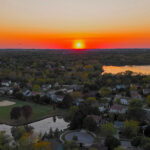Justice Department lawyers argued at trial on Dec. 12 that there is little evidence a shipping channel dug decades ago by the Army Corps of Engineers contributed significantly to the castastrophic flooding after Hurricane Katrina that swamped St. Bernard Parish and New Orleans’ Lower 9th Ward in 2005.
A new, non-jury trial in U.S. Court of Federal Claims opened Monday against the corps, accused by 128 home and business owners of effectively destroying their property and making them vulnerable to the powerful hurricane when it dug the Mississippi River-Gulf Outlet — or MRGO — in the early 1960s.
The case was filed in 2005 in that court, which handles lawsuits against the federal government. The court is located in Washington, but the trial is taking place in New Orleans under the oversight of U.S. Court of Federal Claims Judge Susan G. Braden.
The trial is part of a multipronged legal attack on the Army Corps, which is facing billions of dollars in damage claims arising from Katrina’s floodwaters. The suit argues that residents in St. Bernard and the Lower 9th Ward deserve to be compensated for the government’s taking of their property.
In a separate but related case, plaintiffs won a major victory in November 2009 when a federal judge ruled that the corps’ decision to dig the shipping channel in the 1960s was to blame for flooding St. Bernard Parish and the Lower 9th Ward. However, the same judge, U.S. District Judge Stanwood Duval, ruled against plaintiffs in their attempt to blame the corps for causing the flooding of the bulk of the city.
Those rulings are on appeal and could wind up being decided by the U.S. Supreme Court.
In the new trial, the shipping channel has been blamed for widespread ecological damage to the wetlands southeast of New Orleans and the plaintiffs argue that the channel left St. Bernard and the Lower 9th Ward vulnerable to flooding that covered rooftops in some of those areas.
The plaintiffs say the channel funneled salt water into the marshes of St. Bernard, killing the natural buffer those wetlands offered against storms. They also argued that the MRGO, in fact, served as a conduit for storm surge from the Gulf of Mexico. The plaintiffs say the value of the land their homes and businesses sit on has been ruined by the government.
But in opening statements, Michael Barron, a Justice Department lawyer, said government experts would show other factors, such as the settling of the ground or subsidence, was causing land loss before the MRGO was dug. He also denied that the MRGO acted as a funnel for storm surge. The MRGO was originally built as a shortcut for oceangoing ships, avoiding the much longer winding route along the Mississippi River.
He said the plaintiffs’ arguments that the MRGO caused them to flood repeatedly were flawed. He noted that the plaintiffs’ properties were not flooded by other major storms that struck the northern Gulf Coast after the MRGO was built.
He also argued the rebuilding taking place in St. Bernard Parish and the Lower 9th Ward since Katrina was evidence that the corps had not destroyed the value of the plaintiffs’ properties.
Charles Cooper, a lead plaintiffs’ lawyer, said the government’s own documents predicted the MRGO’s devastation. He cited reports by government biologists and the corps warning that the MRGO, once built, would siphon in salt water and cause damage.
He said government documents warned about the channel widening and about the possibility that levees being built along the channel would be insufficient to protect St. Bernard and the Lower 9th Ward against major storms.
He also said the government’s own documents told a story that showed the corps knowingly used incorrect data in designing levees for St. Bernard and the Lower 9th Ward. Cooper said that meant flooding was bound to happen because of the corps’ failure to maintain the channel and build adequate levees.
“This case is made out of the mouth of the government itself,” Cooper said. “The corps allowed this erosion to occur as a matter of policy.”
The trial is expected to last five days and include testimony from experts about what effect the MRGO had on flooding.
The judge is not expected to rule from the bench at the end of the trial, lawyers said.
Since the hurricane, about half of the pre-hurricane population of 60,000 people has returned to St. Bernard. Rebuilding has been very slow in the Lower 9th Ward, the area hit hardest by Katrina.
Was this article valuable?
Here are more articles you may enjoy.


 New Book Proposes Four-Prong Legal Strategy to Negate Nuclear Verdicts
New Book Proposes Four-Prong Legal Strategy to Negate Nuclear Verdicts  US Tariffs Projected to Slow Global Economy and Insurance Premium Growth: Swiss Re
US Tariffs Projected to Slow Global Economy and Insurance Premium Growth: Swiss Re  State Farm Implements 27% Rate Increase for Illinois Homeowners
State Farm Implements 27% Rate Increase for Illinois Homeowners  Three Insurers Join Ward’s Annual Top 50 P/C Ranking for 2025
Three Insurers Join Ward’s Annual Top 50 P/C Ranking for 2025 

